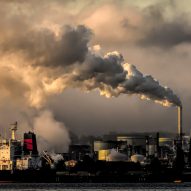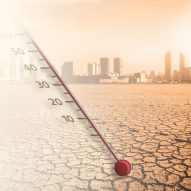 July 18, 2023 1:10 pm
Published by Climate Extremes
July 18, 2023 1:10 pm
Published by Climate Extremes
Global climate models (GCM) are limited to looking at large scale processes providing information at a 50 – 250 km scale, whereas decision makers are typically looking at how impacts will be experienced at a local level. Researchers use a process called ‘downscaling’ to look at regional climate influences and information such as topography at a local scale. Different methods are used on Global Climate Model outputs to translate the information to finer resolutions. The most commonly used methods are... View Article
 July 18, 2023 1:06 pm
Published by Climate Extremes
July 18, 2023 1:06 pm
Published by Climate Extremes
All models have a bias. Bias occurs because models are a mathematical representation of a highly complex system which is a simplification of the reality of many processes. Models can have bias because of limiting spatial resolution or incomplete knowledge of how a process works. For example, some climate models estimate the timing of the monsoon arrival to be earlier than expected in reality. This can lead to outputs of temperatures being too high or too low and can give... View Article
 July 18, 2023 1:01 pm
Published by Climate Extremes
July 18, 2023 1:01 pm
Published by Climate Extremes
Shared Socioeconomic Pathways (SSPs) describe five broad socioeconomic trends that could shape future society including assumptions on energy use, population levels, education and technology as well as the level of ambition for mitigating climate change. This is translated into scenarios of greenhouse gas emissions with projections from scenarios. Shared Socioeconomic Pathways were developed to give a general view of future climate policy impacts for a range of possible climate futures. The Shared Socioeconomic Pathways are:
 July 18, 2023 12:55 pm
Published by Climate Extremes
July 18, 2023 12:55 pm
Published by Climate Extremes
Representative Concentration Pathways (RCPs) are levels of radiative forcing (or levels of energy that enter the atmosphere) that correspond to different levels of greenhouse gases emitted to the atmosphere from human activities. Representative Concentration Pathways are useful ways to plan adaptation to various levels of greenhouse gases. Models can be thought of as running, ‘what if?’ scenarios i.e., a range of plausible outcomes. The output can help to understand long-term consequences of policy for decision-makers. Each pathway corresponds to a... View Article
 July 18, 2023 12:50 pm
Published by Climate Extremes
July 18, 2023 12:50 pm
Published by Climate Extremes
An ensemble is a group of climate model simulations used to understand a problem by representing many different possible future scenarios. Due to uncertainties in the parametisations and internal climate variability, single model runs can produce different outcomes which can help understand elements of our climate. Using a single model can show how changed initial conditions affect an outcome. The most well-known ensemble of opportunity is the Coupled Model Intercomparison Project (CMIP) directed by the World Climate Research Program. CMIP... View Article
 July 18, 2023 12:36 pm
Published by Climate Extremes
July 18, 2023 12:36 pm
Published by Climate Extremes
There are a variety of climate models, and their use depends on a variety of factors including: the area of study or the complexity of the model. Some climate models represent particular climate processes with more detail than others. For a model to explore ocean processes it is not necessary to include vegetation and soil processes. Ignoring these processes allows the model to run faster, which can be an advantage. Climate models vary depending on the processes they represent. It... View Article
 July 18, 2023 12:28 pm
Published by Climate Extremes
July 18, 2023 12:28 pm
Published by Climate Extremes
A climate scenario is a plausible representation of future climate. It can be used to investigate the potential impacts of climate change. What is a climate model simulation? A climate model simulation is a representation of the real-world climate system, created using mathematical equations and solved on a computer. They are used to replicate the behaviour of the system under various conditions. The accuracy and utility of a model simulation depends on aspects including how natural climate variability is simulated,... View Article
 July 18, 2023 12:19 pm
Published by Climate Extremes
July 18, 2023 12:19 pm
Published by Climate Extremes
Climate model resolution refers to the size and complexity of the data calculated by supercomputers to help us understand the weather and climate. “Resolution” is a concept we see in our everyday lives but might not even realise. Have you ever seen a picture on the internet and thought it looks blocky or fuzzy? Computers break pictures down into small squares called “pixels”. The more squares or pixels a computer uses, the more detail you can see in a picture,... View Article
 July 18, 2023 11:34 am
Published by Climate Extremes
July 18, 2023 11:34 am
Published by Climate Extremes
A weather system can be described by how quantities such as the speed, pressure and temperature of the gases behave in the atmosphere, and the water behaves in the ocean. These quantities move in 3-dimensional space. A large number of complex mathematical equations describe their behaviour. However, they are too complex to solve by hand, or on a personal computer. Climate models need a lot of computing power. Supercomputers provide an extremely powerful, fast environment with many thousands of processing... View Article
 July 18, 2023 11:29 am
Published by Climate Extremes
July 18, 2023 11:29 am
Published by Climate Extremes
Researchers run models by setting a starting condition. For example, for a model toy car – did it start on a flat surface or on a hill and how hard was it pushed? With a climate model we can set the amount of greenhouse gases in the atmosphere and see what effect this has on temperature. We know that temperature increases by a certain amount depending on the amount of greenhouse gases. The equations that represent this relationship are solved... View Article










